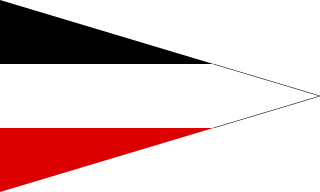
The Battle of Pułtusk took place on 26 December 1806 during the War of the Fourth Coalition near Pułtusk, Poland. Despite their strong numerical superiority and artillery, the Russians suffered the French attacks, before retiring the next day having suffered greater losses than the French, disorganizing their army for the rest of the year.

The Battle of Komarów, or the Zamość Ring, was one of the most important battles of the Polish-Soviet War. It took place between 30 August and 2 September 1920, near the village of Komarowo near Zamość. It was the last large battle which cavalry was used as such and not as mounted infantry.
The Imperial Russian Army in June 1812 consisted of three main armies and other military formations. The Commander in Chief of the Army was Emperor Alexander I.
The 5th Guards Tank Division was an armored division of the Soviet Ground Forces and Russian Ground Forces, active from 1945 to 2009, in two different formations.

The Guards Cavalry Division (Garde-Kavallerie-Division) was a unit of the German army that was stationed in Berlin. The division was a part of the Guards Corps (Gardekorps).
The cavalry division of the Soviet Union's Red Army was a type of military formation that existed from the early days of the Russian Civil War until the early 1950s when they became obsolete with the rise of mechanized warfare.

The Bavarian Cavalry Division was a unit of the Royal Bavarian Army, part of the German Army, in World War I. The division was formed on the mobilization of the German Army in August 1914. The division was disbanded in 1919, during the demobilization of the German Army after World War I. The division was raised and recruited in Bavaria.

The 6th Cavalry Division was a unit of the German Army that fought on Eastern and Western Fronts during World War I. The division was formed on the mobilization of the German Army in August 1914 and was disbanded in 1919 during the demobilization of the German Army after World War I.
The history of the German Cavalry in World War I is one of an arm in decline.
The 1st Zaporozhye Red Cossack Cavalry Division was a Red Army cavalry division. It was based in Proskurov for most of its existence. Formed from the 8th Cavalry Division, it became the 32nd Cavalry Division in 1938.
The 1st Siberian Army Corps was an elite unit of the Imperial Russian Army. It was raised in May 1900 and disbanded in August 1918.
The 4th Cavalry Division was a cavalry formation of the Russian Imperial Army.
The 11th Cavalry Division was a cavalry formation of the Russian Imperial Army.
The 13th Cavalry Division was a cavalry formation of the Russian Imperial Army.
The 14th Cavalry Division was a cavalry formation of the Russian Imperial Army.
The 15th Cavalry Division was a cavalry formation of the Russian Imperial Army.
The 5th Cavalry Division was a cavalry formation of the Russian Imperial Army.
The 8th Cavalry Division was a cavalry formation of the Russian Imperial Army, part of the 8th Army Corps. It was headquartered at Kishinev by 1914.
The 9th Cavalry Division was a cavalry formation of the Russian Imperial Army.
The 10th Cavalry Division was a cavalry formation of the Russian Imperial Army.




